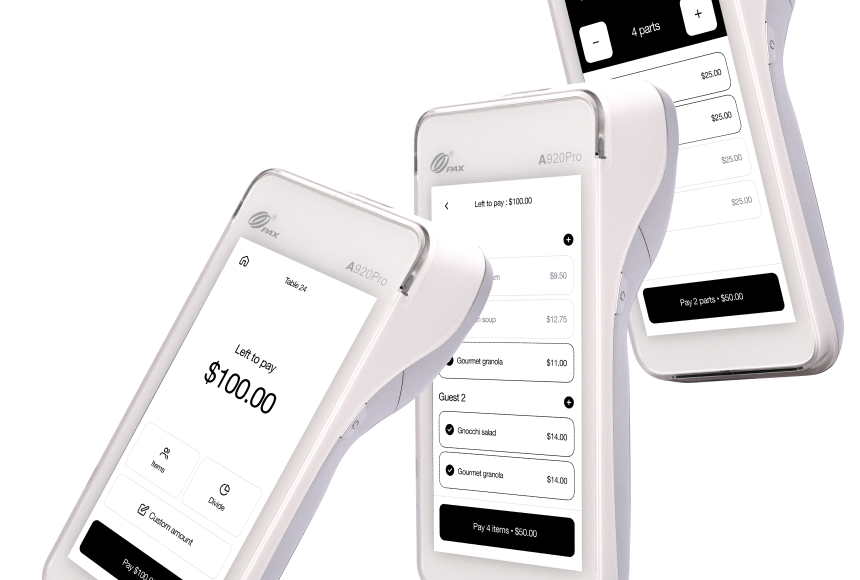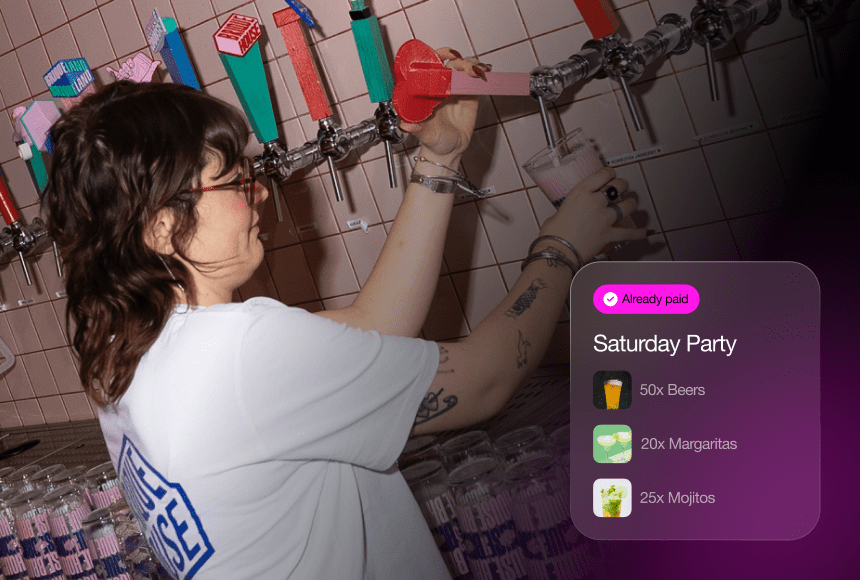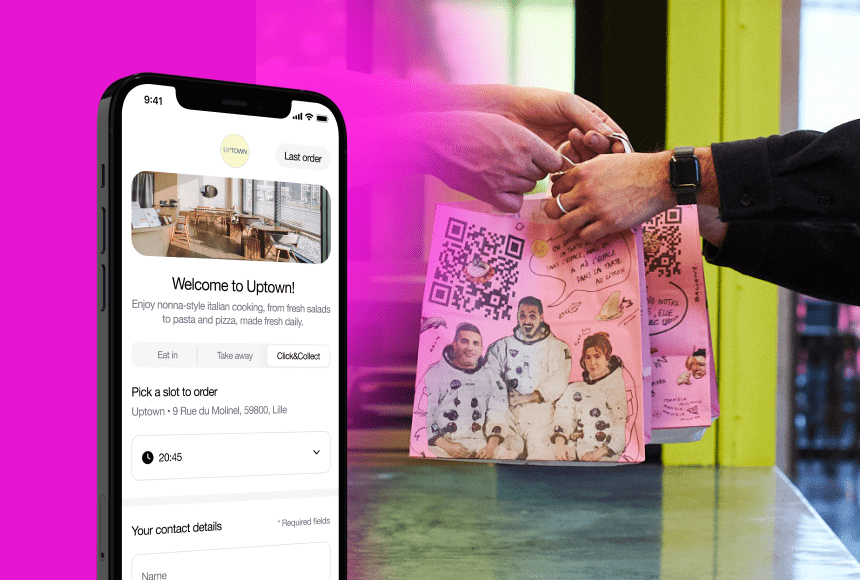The Restaurant Payment Revolution: Why Contactless Leads the Way This Winter
What’s Driving This Shift?
Picture a cozy, bustling restaurant on a chilly evening. Diners wrapped in scarves and hats eagerly step into the warm dining room, excited to savor hearty dishes and steaming beverages. When the meal is over, however, the last thing most people want is a time-consuming hassle at the counter or contact with outdated card readers. This scene is increasingly common in the United States, where diners demand speed and simplicity—to the point that contactless payment methods are no longer just a novelty, but a necessity.
In recent years, US consumers have grown accustomed to tapping cards or scanning QR codes on their smartphones to pay. Although classic swipe payments and chip-and-signature methods have been around for decades, they feel clunky in a “tap and go” era. According to a 2022 survey by the National Restaurant Association, over half of Americans say their dining choices are influenced by whether a restaurant offers quick digital payment options. Safety, convenience, and hygiene have propelled contactless payments into the mainstream, shifting diner expectations and pushing restaurants to adapt or risk being left behind.
But why the spike now, especially in winter? For starters, nobody likes fumbling with credit cards or cash in freezing temperatures. Contactless payments allow diners to settle the bill with a single tap or scan—often straight from their table—so they can head back into the cold with minimal wait time. This trend is about giving customers the freedom to pay on their own terms and ensuring the payment segment of their dining experience is just as smooth, warm, and comforting as the meal itself.
From Swipe to Tap: A Quick History
Swipe payments using magnetic stripes dominated the US for decades. Then came chip-and-PIN systems, aiming to boost security. Although chip-and-PIN adoption was standard in many European countries by the late 2000s, the US was slower to implement chip technology. Even after chips arrived, customers and staff often complained of sluggish technology: insert the card, wait, remove it, sign, or enter a PIN. Not exactly the streamlined experience that fosters diner satisfaction.
Fast-forward to today, and you’ll see that contactless payments—think Apple Pay, Google Pay, or tap-to-pay credit cards—are transforming expectations. For restaurant owners, the question has shifted from “Should I offer contactless?” to “Which contactless methods do I need?” There’s a distinct sense of urgency to adopt these innovations, particularly as colder weather encourages diners to spend as little time as possible with repeated face-to-face interactions. Even degrees of separation such as waiting for a server to bring the check can add friction to a diner’s experience.
This leap in technology has been facilitated by modern payment terminals capable of reading NFC (Near-Field Communication) signals. With the tap of a phone or card, payments are processed within seconds. The secret sauce? Invisible data encryption and seamless integration with point-of-sale software. Gone are the days of swiping a card repeatedly. Instead, the future lies in quick taps and digital confirmations.
The Winter Advantage: Why Seasonality Matters
The cold weather phenomenon is more than a mere coincidence. Ask any restaurant owner who’s grappled with the realities of reduced foot traffic when temperatures drop. With fewer diners out and about, restaurants strive to maximize satisfaction—both to draw customers inside and encourage return visits.
Offering contactless payment helps keep lines moving faster, avoiding the dreaded lobby crowd or bar bottleneck. Diners don’t have to remove gloves, count bills, and wait for change. They simply tap and go. That ease of use appeals to families in a hurry, business professionals grabbing lunch, and even couples out for date night who’d rather spend time lingering over dessert than standing at the register.
Similarly, the holiday spirit often equates to larger gatherings and frantic schedules. Your guests want to enjoy a warm meal without the extra step of dealing with multiple cards or waiting on the server to split the check. Contactless payment solutions can often manage split bills instantly, letting each person cover their portion with minimal back-and-forth. In a season where efficiency and a positive atmosphere count the most, it’s a modern convenience that can set a restaurant apart.
How Contactless Decisions Impact Your Bottom Line
Contactless payment isn’t just about meeting current trends; it’s a smart business move. In fact, restaurants that integrate up-to-date payment technology often see an upswing in average spend per table. When it’s easier and faster to pay, diners might be more inclined to add an extra appetizer or dessert without worrying about a cumbersome checkout process afterward.
Moreover, this technology can dramatically reduce the margin of error. When servers spend less time manually handling credit cards or counting cash, the likelihood of miscalculation or data entry mistakes goes down. Automatic receipt generation and integrated tipping options also streamline operations. By capturing tips digitally, restaurants can manage tip distribution more transparently, promoting an atmosphere of trust between management and staff.
Then there’s the newfound opportunity of collecting real-time feedback. Some digital solutions—like the QR code payment flow introduced by sunday—prompt diners to leave a Google review immediately after paying. This can lead to more frequent and more positive online buzz, which in turn attracts new patrons. Connecting feedback loops like these with your day-to-day operation allows you to respond quickly, enhance service, and differentiate your brand in a crowded market.
Winter Menu Metaphor: Serving an Appetizing Payment Experience
Imagine contactless as the “special sauce” on your winter menu. It adds flavor and excitement, seamlessly pairing with your main dish—your food and hospitality—to create a cohesive dining experience. Like a well-sized portion of soup on a frosty evening, contactless payment warms your diners with its simplicity and efficiency. It’s no surprise that restaurants implementing tap-and-pay often see an immediate benefit in customer satisfaction scores.
Take, for example, a hypothetical family-owned bistro in Boston. In past years, the owners dealt with lengthy lines on Friday nights, especially during winter months when fewer tables were available due to indoor-spacing restrictions. Servers still swiped cards on one central payment terminal, inadvertently causing a queue by the host stand. After upgrading to QR code payments that customers can scan at their tables, they saw a 20% reduction in wait times and a noticeable boost in table turnover. During the busy season, that improvement translated into more guests served each evening and a jump in overall revenue. Simple steps like these can create lasting transformations.
Step-by-Step: Setting Up Contactless Payment
Implementing a new payment system can sound daunting, but let’s walk through it like a simple recipe. By following some basic steps, your restaurant can be well-prepared to serve diners with effortless payment methods this winter.
- Assess Your Infrastructure: Verify that your existing POS software supports contactless payments. Most modern systems have the options built in—either via smartphone digital wallets or tap-enabled cards.
- Upgrade Your Hardware: If your current card reader is outdated, invest in a payment terminal equipped with NFC technology. Ensure it’s quick to respond and easy for staff to operate.
- Enable QR Code Payments or Tabletop Devices: If you want to go beyond simple tap-and-pay, consider QR code solutions. Diners just scan a code at their table, settle the check, and are out the door in seconds.
- Offer Tipping Options Up Front: In the US, tipping remains an essential component of restaurant culture. Make sure your contactless software prominently displays a tipping prompt. That gentle reminder often leads to higher tip amounts, benefiting your staff.
- Integrate Loyalty Programs: Looking to retain customers through the colder months? Weave your loyalty benefits into the payment flow. Restaurants often see bigger returns when patrons earn rewards with each tap, encouraging repeat business.
- Train Your Staff: A knowledgeable team is your best asset when rolling out contactless. Show them how to guide customers through payment steps swiftly, and encourage them to highlight the new payment options.
- Promote, Promote, Promote: Let your guests know you’ve upgraded. Place small signs on tables, mention it on social media, and have servers ask if diners would prefer to “tap to pay” or “scan and pay.” The more awareness you build, the quicker adoption will rise.
Beyond the Payment: Added Perks for Diners
When you offer a contactless payment experience, you’re not just simplifying the exchange of funds—you can also deliver a modern, integrated guest experience that sets you apart. This is especially true when digital payments open possibilities for robust add-ons:
- Instant Rewards and Discounts: Automatic discounts or promotional offers can pop up when customers scan and pay through your restaurant’s website or app. These small surprises make the experience memorable.
- Direct Feedback Channels: Ever wish you could capture more on-the-spot reviews? A quick “Leave us a Google review” prompt at the end of the payment process can boost your online presence.
- Personalized Suggestions: Some systems can suggest favorite dishes based on a customer’s order history. Return diners appreciate personalization, especially if it guides them toward a comforting winter beverage or hearty specialty dish.
Providing these one-click experiences demonstrates your restaurant’s commitment to a cutting-edge and user-friendly format. It also keeps them engaged—waiting for what “treat” or improvement you’ll introduce next.
Troubleshooting and Common Myths
Despite its many merits, contactless payment still faces skepticism from some restaurant owners and diners. Let’s debunk a few persistent myths:
Myth #1: It’s Not Secure
Actually, contactless transactions boast advanced security features. Thanks to tokenization and dynamic credentials, the sensitive card details never travel openly. Federal Reserve guidelines indicate that contactless payments are considered just as secure, if not more so, than traditional EMV chip transactions.
Myth #2: Only Younger Diners Will Use It
Although tech-savvy millennials and Gen Z often champion the latest digital tools, older generations also appreciate the simplicity of tapping over swiping. The intuitive process—just tap your phone or card until you see confirmation—requires minimal learning. Over the holidays, families spanning multiple generations can pay for a group meal with surprising ease.
Myth #3: It’s Expensive to Implement
While there is a short transition phase that may require upgrading payment terminals or your restaurant’s software, the costs needn’t be prohibitive. Many POS systems already have the capacity to process contactless transactions. The payoff in increased sales, reduced friction, and more satisfied diners often makes this investment worthwhile.
Behind the Scenes: The Staff’s Role
Your staff are the ambassadors of your contactless payment solution. They’re the ones who will explain QR codes to first-time users, reassure diners about the speed and safety of tap-to-pay, and troubleshoot a lost signal or glitch.
Ensure that every host, server, and cashier feels comfortable demonstrating how to pay. Encourage them to pass on quick tips, such as activating Apple Pay on an iPhone or guiding an Android user to open their digital wallet. Empower staff to mention tipping prompts and quick feedback requests. It’s all part of delivering a seamless guest experience, and the warmth your team exudes is what fosters long-term loyalty.
A Glimpse Ahead: The Future of Dine-In Payments
This winter, contactless has hit a tipping point: diners expect it, and restaurants that fail to adapt can appear outdated. But looking further ahead, we’ll see more than just quick taps and scans. Biometric authentication—like using a face ID to authorize a payment—may enter mainstream restaurants, eliminating the need for physical payment methods altogether. Wearable devices, from smartwatches to rings, will allow customers to pay with a gesture. Meanwhile, integrated artificial intelligence can refine suggestion engines, upselling the perfect comfort dish based on a customer’s previous orders.
While some of these developments may feel futuristic, the essence remains the same: diners want a frictionless culinary journey. By emphasizing quick, safe, and intuitive transactions, restaurants grow customer satisfaction and loyalty. The time saved on processing payments can be reinvested in better service, staff training, and building the personal touches that keep guests coming back for more.
How to Market Your Contactless Edge
An often-overlooked aspect of introducing new technology is communication. Once you have the system in place, how do you let patrons know, and how do you ensure they use it? Here are some immediate strategies:
- In-Restaurant Signage: Place small, easily visible displays on tables and near the register. Persuasion is simple: “Ready to pay? Tap or scan. No more waiting around!”
- Social Media Announcements: Mention your updated payment options on channels like Facebook, Instagram, and Twitter. Show a quick demo reel or a short clip of a person tapping their phone to pay. It’s attention-grabbing and demonstrates your restaurant’s modern vibe.
- Promotions: Offer a small discount or a free dessert for customers who use contactless payment for the first time. Creating small incentives can quickly shift behavior.
- Team Engagement: Encourage servers to check in with guests as they present the bill. A simple question like “Did you know you can pay right on your phone and be ready in seconds?” can make all the difference.
This targeted approach ensures you reap the benefits of your technology investment. Over time, more and more visitors will note your streamlined process, leaving positive feedback both in person and online.
Finding the Right Partner
No two restaurants are exactly alike—your choice of payment technology should reflect the specific needs of your business. Some solutions excel at table-side payment, others are brilliant with QR codes, and some provide robust analytics to help you adjust your menu, staffing, or promotions. Before diving in, consider the following:
- Integration: Does it integrate seamlessly with your existing POS system? Switching everything out can be time-consuming, so a solution that “plays nicely” with others might reduce headaches.
- Speed and Reliability: Every second counts in hospitality. Factor in any monthly or per-transaction fees based on how swiftly and reliably the payment processes.
- Upselling Capabilities: Opportunity knocks if the software can gently upsell a final dessert or promote a loyalty subscription. Check whether the interface allows for that, in a non-intrusive way.
- Customer Support: You’ll want easy access to a knowledgeable support team ready to help with hardware glitches or software updates. Reviews from other restaurant owners in your region can be revealing.
Some owners prefer a straightforward contactless approach—just tap, pay, leave. Others see an opportunity in more advanced solutions, such as sunday’s integrated tip and feedback model or analytics dashboards. It’s all about finding the best fit and ensuring that you, your staff, and your customers have a positive experience.
Serving Up What’s Next
Whether your restaurant is a fast-paced urban café or a rustic countryside hideaway, adopting contactless payment is a recipe for success. It complements a cozy winter atmosphere, speeds up your table turnover, and adds a layer of confidence for diners who value safety and convenience. Like tasting a perfectly balanced soup, the overall experience just feels right.
Embrace technology as a natural extension of your menu. Much as you’d source fresh, high-quality ingredients for your dishes, sourcing the right payment infrastructure ensures you serve an exceptional experience from first greeting to final tap. Your restaurant stands out not just for the flavors on the plate but for the modern approach that respects your guests’ time and preferences.
This winter, the question isn’t whether you can afford to implement contactless payments—it’s whether you can afford not to.
FAQ: Frequently Asked Questions
Here’s a quick resource for common questions about implementing contactless payments in the US restaurant setting.
1. Will I lose tips if guests pay too quickly?
Not at all. Many contactless solutions, especially those that use a QR code at the table, clearly display tipping options. In fact, streamlined processes can encourage higher tips because guests see a simplified tipping prompt.
2. How can I ensure older customers feel comfortable with digital payments?
Train servers to offer gentle guidance and reassurance. Demonstrating how to “tap to pay” or scan a QR code just once can greatly ease fears. The intuitive nature of contactless makes it easier for everyone, regardless of age.
3. What if my internet goes down?
Most modern systems have built-in offline functionality or the ability to store transaction data temporarily. Check with your payment provider to confirm you have a backup plan, ensuring transactions can still go through when connectivity is weak.
4. Do I need separate hardware for contactless or QR code payments?
That depends on your existing setup. If you already own an NFC-enabled payment terminal, you’re likely covered for tap-and-pay. For QR codes, you may need software capable of generating and tracking each table’s bill. Many POS solutions now bundle these features together.
5. How can I use contactless payment to boost loyalty?
Integrate loyalty programs and rewards into the payment flow. Some digital solutions automatically link a diner’s payment method to loyalty points, while others prompt them to enroll on the spot. By combining fast, convenient billing with perks, you increase the likelihood that customers will choose your place again.




